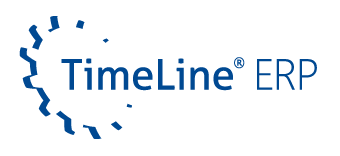Today, a well-functioning, customized Enterprise Resource Planning ERP system is essential. Used correctly, it can be the hub of your business – a central place where all your business processes converge and can be coordinated by you. But getting there is not always easy. The task of finding the right system for your business can present you with one or two challenges – choosing the right ERP vendor is one of them. The complexity of the market is often underestimated. It can be very confusing, with a number of ERP vendors offering systems for different use cases. Each software has its own strengths and weaknesses. Is it any wonder that many decision-makers are already overwhelmed at this early stage of the project? To make the ERP selection process a little easier, we have compiled the most important information about the selection process for you.
ERP selection made easy – getting there step by step
The entire ERP selection process usually involves a great deal of organizational effort and requires careful preparation. The process is divided into several stages. The search for a suitable ERP provider always begins with a requirements analysis. The results are usually recorded in a requirement specification. The creation of a longlist and a shortlist is also crucial for a structured process. The first step is a broad search to identify all potential ERP vendors. In each subsequent step, the number of candidates is reduced according to an elimination process until only a handful remain.

This approach means that you are not immediately overwhelmed by the flood of ERP vendors, but have the opportunity to filter by certain characteristics and then make a decision. This may sound like a long and unnecessarily time-consuming process. Keep in mind, however, that you will get to know each of the remaining candidates personally during an ERP workshop before the actual ERP selection. It is therefore in your best interest to start with a short – but high quality – shortlist. So far so good – but how does it all work?
You may also be interested in this:
- Why is requirements analysis important?
- The requirements specification – a guide for the customer
- The requirements specification in the ERP project – implementing the customer’s wishes
Starting with a longlist
Now you have read the term ‘longlist’. But what exactly is a longlist? The name gives it away a bit. A longlist is a popular and efficient tool for ERP selection. Basically, the goal is to reduce the large and confusing range of products on offer to a manageable level so that you not only find it easier to make a decision, but also to make the right choice for you in the end. The first step is to get a general idea of the ERP vendors and options that are generally available, and to eliminate those that do not meet your key selection criteria.
Where do you find potential ERP vendors?
There are several approaches to finding potential ERP vendors. The most common method is probably a simple and targeted Internet search. A vendor’s website will give you an initial overview and provide you with information that you can use to create your longlist. However, the downside is that most websites only list the most important functions and features, and you may not be able to tell if the provider can meet your specific needs. In addition to researching on the Internet, you can also find information in trade magazines or by attending trade shows and events. The latter has the great advantage that you can get to know the provider personally and form a first impression. You should never ignore the interpersonal level when choosing an ERP.

The World Wide Web as a first stop
More and more vendors are offering live webinars to give prospective customers a first look. Similar to a trade show, this makes it easier for you to assess whether you should consider working with the ERP vendor. Comparison sites can also be a valuable tool in your search. They allow you to filter a large number of ERP vendors based on specific criteria, giving you an initial overview. However, it is important to ensure that the platform is independent and neutral. Regardless of how you search for potential candidates, you should always keep in mind your ultimate goal of finding an ERP system that is right for you. The following questions can help you determine whether or not a candidate should be on your long list:
- Does the ERP system meet your most important requirements?
- Which of your non-functional requirements does it meet?
- Does the ERP vendor specialize in a particular industry, perhaps even tailored for you?
- Are there any criteria that rule out the vendor?
The point of this step is not to analyze every ERP vendor in detail. A cursory review is sufficient at this stage. If an ERP vendor meets the most important requirements, you can add it to your collection. The result of your research is a list of potential ERP vendors, called the longlist.
You may also find this interesting:
- ERP implementation cost drivers
- Implementation with waterfall or agile ERP model?
- Why does an ERP project fail?
Reducing and filtering – how the shortlist is created
The first part is done. You now have a list of ERP vendors that are generally of interest to you – but you have not investigated them further. The next step is to separate the wheat from the chaff and take a closer look at the candidates. But how do you do that? What criteria should you look for? This is where your specifications come in. Send them to all the ERP vendors on your long list. Briefly describe your requirements and ask for an initial assessment. Of course, the primary focus should now be on whether the ERP vendor and its software are a good fit for you and can implement your requirements. But don’t just pay attention to the technical content of the answers; the soft factors in particular will give you valuable information about your potential partner. The following questions will help you in your evaluation:
- How long do you have to wait for a response from the ERP vendor?
- Do you get a standard response or does the vendor respond to you personally?
- Is the communication at eye level?
- Does the feedback provide value to you, or does it feel like a sales pitch?
Don’t underestimate interpersonal relationships
The interpersonal relationship is often underestimated, but it is essential for successful collaboration. If you do not get along with the provider on a personal level for some reason, conflicts are often inevitable. You can now use the reactions of each vendor as a reference point to eliminate further entries from the list. Your list should now contain only ERP vendors that meet your required priorities and also score high on the soft factors. In a best-case scenario, you will be down to two to four ERP vendors.

If your shortlist is still significantly longer at this point, you should filter a little more ruthlessly. As mentioned above, the last step before the actual ERP selection is a multi-day workshop in which you take a closer look at each of the remaining vendors. These take up an enormous amount of resources, and the project team in particular is tied up during this time and not available for day-to-day business. So try to thin the list as much as possible and move on to the next phase with the shortest possible shortlist. After all, every provider you eliminate in advance will make the next step much shorter.
You might also find this interesting:
- What is an ERP workshop?
- How do I build a good project team?
- What qualities should a project manager have?
These tips will help you with your ERP selection
Narrowing down the vast array of products out there sounds easier than it is. After all, all vendors put their best foot forward, and you really need to do your homework to determine who is the best fit for your business. The following tips can help you find your way through the ERP jungle:
It all rises and falls on precise requirements
Many companies see an ERP system as the solution to everything that goes wrong in their business. However, this approach is misguided and not based on reality. At least not completely. Even if you are aware of the problem, very few people think about what a concrete solution to this problem might look like. Of course, an ERP system can significantly improve processes, but first and foremost, it is and will remain a tool that will only benefit you if it is used correctly. So try to define your requirements and goals as specifically as possible. Maybe you already have a solution?
Limit yourself to the most important functions
Let’s get one thing straight – you probably won’t find the perfect ERP system for your needs. Each has its pros and cons. What is an important feature for one company may be out of place for you. However, many companies hope that the solution will solve all their problems, offer many features, streamline processes, and do so with as little effort as possible. If you don’t prioritize, ERP selection can become an endless search. You may even miss the best solution for you. To avoid a long list of requirements, declare the most important items on your list as “must-haves” and consider whether the rest are essential.
ERP selection with an eye on the future
What is wrong now should be fixed, or at least that is the motto in many places. This approach is understandable. But don’t forget that a business is constantly evolving. In most cases, an ERP system will be with you for many years, so it is not wrong to consider future developments. What challenges might you face in the near future? Think about your needs today and in the years to come.
Seek a personal meeting
It is often difficult to evaluate an ERP vendor based solely on its website. You will soon realize that this is much more informative and will help you to classify your counterpart. Remember that you are not only buying the software, but also services such as training or consulting. This is why soft indicators also play an important role in ERP selection.
Ease of use is an important consideration
No matter how great the system is, if it is difficult to use on a day-to-day basis, it will only harm motivation and reduce productivity. That’s why there are features that don’t interfere with processes, but make the daily work of software users much easier. These include easy-to-find controls, intuitive user interfaces, and customizable views. Many vendors show screenshots of the user interface on their websites. While this can give you a good idea of what to expect, the usability of an ERP system is more than just how it looks. Keep this in mind as you consider your options.
Be open to solutions
At its core, ERP selection is about finding a concrete solution to existing problems. So try to focus on what you want to achieve, not what you have to do to get there. Be open to different approaches and formulate your requirements in a neutral and process-oriented way. Limit yourself to describing the problem and formulating your desired goal. How this is ultimately implemented is best left to the ERP vendor.
You might also be interested in this:
- Corporate ERP training – is it worth it?
- How can I, as a user, recognize a good ERP system?
- Why online presentations pay off
Conclusion
The choice of ERP should be carefully considered. After all, it is a complex piece of software that interferes with your business processes. Many companies cannot say exactly what they want from an ERP system and therefore find it very difficult to make a decision. Of course, it is not easy to find your way around the wide range of vendors and features, but it would not be wise to just pick one without thinking about it. It is always worth comparing. Try to set clear priorities and focus on both the current situation and the challenges you expect to face. Then nothing will stand in the way of a successful selection process.




